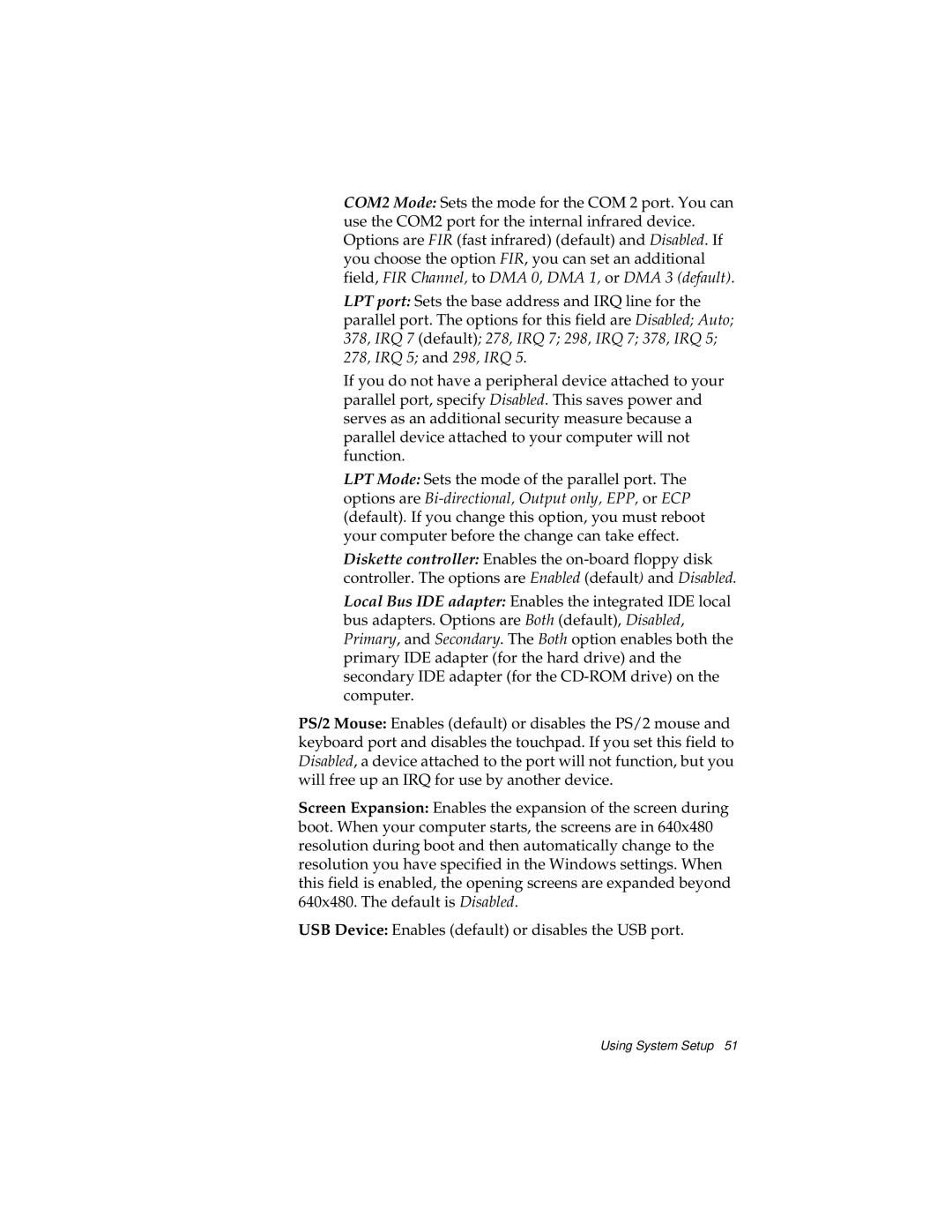COM2 Mode: Sets the mode for the COM 2 port. You can use the COM2 port for the internal infrared device. Options are FIR (fast infrared) (default) and Disabled. If you choose the option FIR, you can set an additional field, FIR Channel, to DMA 0, DMA 1, or DMA 3 (default).
LPT port: Sets the base address and IRQ line for the parallel port. The options for this field are Disabled; Auto; 378, IRQ 7 (default); 278, IRQ 7; 298, IRQ 7; 378, IRQ 5; 278, IRQ 5; and 298, IRQ 5.
If you do not have a peripheral device attached to your parallel port, specify Disabled. This saves power and serves as an additional security measure because a parallel device attached to your computer will not function.
LPT Mode: Sets the mode of the parallel port. The options are
Diskette controller: Enables the
Local Bus IDE adapter: Enables the integrated IDE local bus adapters. Options are Both (default), Disabled, Primary, and Secondary. The Both option enables both the primary IDE adapter (for the hard drive) and the secondary IDE adapter (for the
PS/2 Mouse: Enables (default) or disables the PS/2 mouse and keyboard port and disables the touchpad. If you set this field to Disabled, a device attached to the port will not function, but you will free up an IRQ for use by another device.
Screen Expansion: Enables the expansion of the screen during boot. When your computer starts, the screens are in 640x480 resolution during boot and then automatically change to the resolution you have specified in the Windows settings. When this field is enabled, the opening screens are expanded beyond 640x480. The default is Disabled.
USB Device: Enables (default) or disables the USB port.
